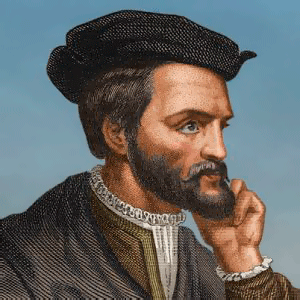News about maps
Digital cartography and GPS navigation
Mapstor news
This Day in History
Travelling with mapstor.com
This Day in History
4th December, 1674 Marquette founded the first European settlement
19th November, 1875 was born Hiram Bingham
18th November, 1832 was born Nils Adolf Erik Nordenskiöld
14th November, 1963 the island Surtsey was founded
11th November, 1729 was born Louis Antoine comte de Bougainville
31st December, 1491 Jacques Cartier was born
 On the 31st of December, 1491 Jacques Cartier was born. This French explorer initiated the colonization of North America, and figured in history as the man who first mapped the Gulf of St. Lawrence and banks of the river St. Lawrence. He became famous as one of the pioneers of Canada.
On the 31st of December, 1491 Jacques Cartier was born. This French explorer initiated the colonization of North America, and figured in history as the man who first mapped the Gulf of St. Lawrence and banks of the river St. Lawrence. He became famous as one of the pioneers of Canada.
It is believed that in 1524 Cartier traveled with the explorer Giovanni da Verratstsano in the expeditions, during which they explore the coast from South Carolina up to Nova Scotia, and many islands, including Newfoundland. Then Cartier was ready to head an expedition to the discovery of land in the New World.
Jacques Cartier decided to try his luck in the study of the West and find the way to China and India. And in 1534 with the assistance of King Francis I, who decided to learn America after the English, Spanish and Portuguese, Cartier began preparations for navigation in Asia. According to the plan, he had to find certain islands and lands where it is rumored that there were a lot of jewels and gold.
It took 20 days to cross the ocean. When the court came to the shores of the island of Funk, the sailors saw a lot of birds, who later became an easy prey for sailors.
On the 10th of May the team began to explore and chart the map of Newfoundland and the Gulf of St. Lawrence. On the 24th of July on the Bay of Gaspé sailors hoisted the 10-meter cross and declared the land possessions of the King of France. Cartier believed that the St. Lawrence River will lead him to Asia. Crew returned to France in September 1534 and Cartier was convinced that he was able to reach the Asian coast.
On the 19th of May, 1535 Cartier organized a second expedition. 110 people on three ships reached the Gulf of St. Lawrence. Cartier took the smallest ship to continue the voyage up the river, and the two ships left for the capital of the Iroquois Stadakona. On October, 2 Cartier arrived in Hoshleagu (now Montreal). The travelers could not pass rapids. Cartier believed that it was the only obstacle in the way to China. It was decided to go back to Stadakone where the crew spent the winter of 1535-1536. During this time, Cartier did not only chart maps, but also managed to create a gazetteer, which described the life and customs of the local people. On 15th of 1536 the team arrived in Saint-Malo and the journey finished.
On 17th of October, 1540 Cartier on the order of the King had to visit earlier opened lands for the purpose of colonization. Against all expectations, the head of the expedition was not Cartier, but Jean-François de La Rocque de Roberval. Cartier was appointed as secondary co-driver and navigator. While Roberval waited for artillery and supplies, Cartier was allowed to sail on his ships before.
On the 23d of May five ships sailed from Saint-Malo. When the expedition reached Stadakonu, Cartier was a few miles up the river, where he created a new settlement (now Cap-Rouge, Quebec). For extra protection on a cliff overlooking the settlement, another fort was built. Then the team began to collect what they think is gold and diamonds. Two merchant ships, on board of which were minerals, were sent back to France, where it was learned that the sailors had brought nothing but iron pyrite and quartz crystals.
Information how sailors survived the winter 1541-1542 has not preserved. We know that in the beginning of June the ships of Cartier went home and on the road near Newfoundland met Roberval courts.
Cartier spent the rest of his life in his native Saint-Malo, earning a living as an interpreter of the Portuguese language. For all its merits, the French navigator died in oblivion. This Day in History 31-12-2012


